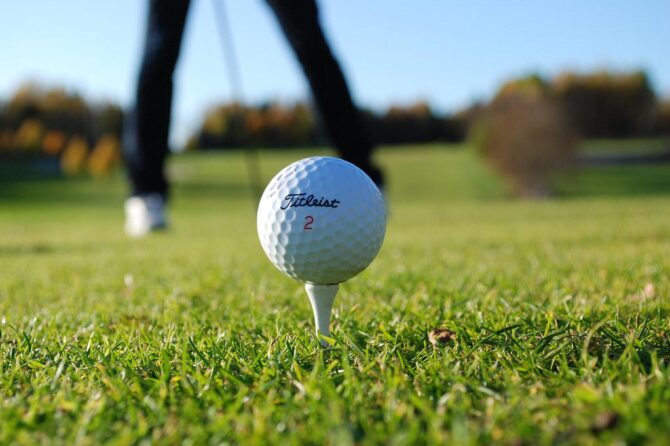Finding yourself in a divot can be frustrating,yet it is a situation every golfer encounters at some point. Understanding how to effectively play your shot from this uneven lie can make a critically important difference in your game. With insights from top golf instructors, this article outlines three essential keys to help you navigate the challenge of hitting from a divot. By mastering these techniques, you can improve your chances of executing a clean shot and maintaining your momentum on the course. Whether you’re playing on a pristine fairway or grappling with a tricky lie, this guide aims to equip you with the skills necessary to tackle any divot.
Understanding the Importance of Proper Stance in Divot Situations
In situations where you find your ball nestled in a divot, adjusting your stance is vital for achieving solid contact. A proper stance allows for better weight distribution and promotes a cleaner strike. Consider the following tips:
- Balance Your Weight: Ensure your weight is distributed evenly on your feet to maintain stability during the swing.
- Adjust Your Grip: A firmer grip can provide better control, reducing the chance of mishitting the ball.
- Align Your Body: Aim your shoulders and hips in the direction of your intended target to enhance accuracy.
Another crucial aspect is the position of the ball in relation to your stance.If the ball is in a divot, it may require you to move the ball slightly forward in your stance. This adjustment helps to promote a downward strike, which is essential when optimizing contact with the ball:
- Ball Forward in Stance: Positioning the ball forward can aid in achieving a cleaner hit despite the obstacle of the divot.
- Grip Adjustment: Consider using a club with a lower loft to better manage the impact angle.
- Focus on the Bottom of Your Swing: Aim for a shallower approach to prevent hitting the ground before the ball.
Lastly, practice is key. Regularly working on various stance adjustments can equip you with the confidence needed when facing challenging lies. Here’s a swift reference chart for adjusting your stance effectively:
| Situation | Adjustment |
|---|---|
| ball in Front of Divot | Move the ball slightly forward in stance |
| Ball Deep in Divot | Lower your stance and aim for a downward strike |
| Ball on a Hard Surfact | Adjust grip for more control |
Techniques for the Perfect Swing to Avoid Improper Contact
Achieving a flawless swing is essential for consistent ball striking, especially when facing challenging lies like landing in a divot. A key technique is to maintain a steady upper body throughout your swing. This helps prevent swaying and ensures that your head remains over the ball. When your upper body stays stable, it promotes better accuracy and cleaner contact, allowing the clubhead to strike the ball first, rather than the ground.
Another crucial aspect is your weight transfer.Focus on shifting your weight correctly during the transition from backswing to downswing. Engaging your lower body effectively will enable you to keep the club descending at the right angle as you approach impact. This technique reduces the risk of hitting behind the ball, resulting in a more solid strike even from less-than-ideal positions.
Lastly, working on your clubface alignment at setup can greatly enhance your performance. Ensure that the clubface is square to your target line at address. A misaligned clubface can lead to inconsistent hits, particularly from tricky lies. Taking a moment to check your grip and alignment will contribute to achieving better ball contact and ultimately lower scores.
Choosing the Right Club for Optimal Divot Recovery
When you find yourself in a divot, selecting the right club is essential for achieving a clean strike. Different situations require tailored approaches, and understanding which club to use can considerably impact your recovery shot. Here are some critically important considerations:
- Assess the Depth and Angle: If the divot is shallow and your ball is sitting relatively high, a mid-iron (such as a 7 or 8-iron) may suffice. Conversely,if the divot is deep,a more versatile club like a utility or hybrid can definitely help get under the ball.
- Consider Trajectory: Higher trajectory shots from a divot can be tricky. Use a lofted wedge if the lie allows, as it will help you launch the ball over any interference while maintaining control.
- Distance and Contact: Choose a club that matches your intended distance. Using a club with a higher loft can help you make cleaner contact, reducing the risk of hitting the lip of the divot.
Along with club selection, addressing your stance and swing is crucial. Here are some tips to enhance your recovery:
- Stance Adjustment: Position your feet slightly wider than normal to provide better balance and control during the swing.
- ball Position: Move the ball back in your stance to encourage a downward strike, allowing the club to make clean contact with the ball rather than the divot.
- Follow Through: Ensure a full follow-through to maintain momentum and prevent unintentional “chilli dips” that can occur when you try to guide the ball.
To provide clarity on club selection, the following table outlines basic recommendations:
| Situation | Recommended Club | Notes |
|---|---|---|
| Shallow Divot | Mid-Iron (7 or 8-iron) | Best for making solid contact. |
| Deep Divot | Utility or Hybrid | Helps lift the ball out effectively. |
| Short Approach | Wedge | Offers control for higher lofted shots. |
Practice Drills to Enhance Your Divot handling Skills
Mastering the art of striking from a divot requires practice and precision. One effective technique is to enhance your **impact awareness** through focused drills. Begin by setting up a mini target area on the practice range. Use alignment sticks or cones to ensure your stance and aim are consistent. As you swing, pay close attention to the **height** and **depth** of your divots. This will not only refine your ball-striking skills but also help you develop a better understanding of your swing mechanics.
An additional drill involves the **”Ball in a Divot”** exercise.Create a small, controlled area of divots on the range and practice hitting from there. Pay attention to your body alignment and weight transfer throughout the swing. The goal is to consistently catch the ball cleanly as you navigate through the divot. This drill emphasizes the importance of maintaining a steady hand position and a **stable lower body**, which are crucial for reliable shots from tricky lies.
Furthermore, integrating the **”Around-the-World Divot Drill”** can provide instant feedback on your performance. Set up multiple stations around the practice area, each designed to challenge your divot skills in varied conditions. At each station, focus on executing a proper downward strike while ensuring your follow-through directs the clubhead smoothly. This variability not only sharpens your technique but also builds confidence in dealing with course scenarios where landing in a divot is inevitable.
facing a divot can be frustrating, but with the right technique, golfers can still execute clean shots. By focusing on stance, club selection, and swing adjustments, players can turn potential setbacks into opportunities for improvement. Embracing these strategies will help enhance your game, irrespective of where your ball may land. Happy golfing!





